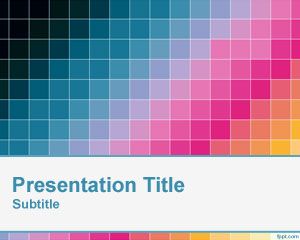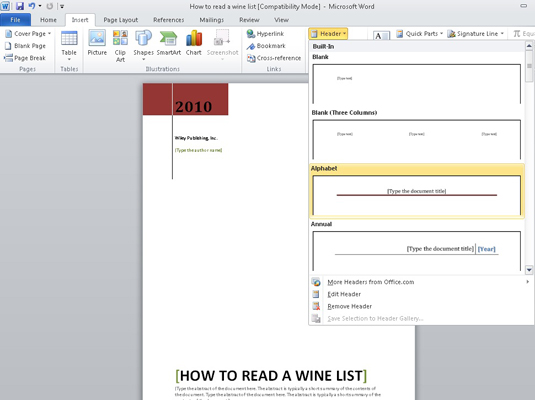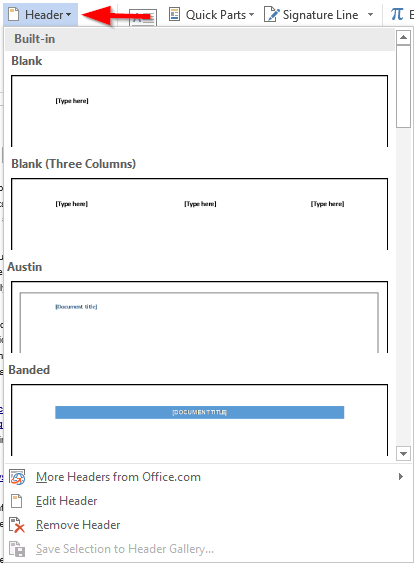- Jan 11, 2021 Click Header or Footer. It's in the 'Header & Footer' panel at the top of Word. A menu will expand. On the menu, you'll see different header and footer styles that you can use as a starting point—all are fully editable. You can select one of these now to add it to your document if you'd like.
- Word for Microsoft 365 Word 2019 Word 2016 Word 2013 Word 2010 Click or tap the page at the beginning of a section. Select Layout Breaks Next Page. Double-click the header or footer on the first page of the new section.
- Step by Step procedures in creating Headers & Footers. Let’s begin by creating a new document, then inserting your Header. Go to the Insert menu and then Header button. After you click on the Header button, a drop down menu will appear with a variety of options. We will work with the “Standard Blank” selection in this demonstration.
- Mar 07, 2021 So, what works for the header also works for the footer. That being said, let's start with inserting something to the header in Word. Go to the Insert tab. This will bring up a dropdown menu with some options in it. These are all presets for the header, provided by Microsoft. For now, select the first option which is Blank.
Activate the header of page 14. Click to deselect the 'Link to Previous' button in the Navigation group of the Design tab of the ribbon. Click Previous to go to the header of the first section. You can now clear this header without affecting that of the second section.
Raise your hand if you have ever had problems dealing with Headers & Footers in Microsoft Word. Did you raise your hand? I know I did!
My boss emailed me a couple weeks ago. “Lauren, can you remove the 3rd page? Every time I try, the footer disappears.” “Not a problem,” I replied, “see attached…” Yes, it took me a good 30 seconds to remove the page and fix the footer. His response, and I quote “Thanks, now you’re making me look incompetent!” I thought it was quite funny, I knew something he didn’t, but then again, while he was punching numbers and selling ERP, I was learning the ins and outs of Headers and Footers.
I’m going to share something with you. There are 2 tools that make or break your Headers and Footers; can you guess what they are? I’ll tell you, they are the type of Page Break you use and the button, Link to Previous. Yep, that’s all, those two things can make or break your entire document.
Step by Step procedures in creating Headers & Footers
Let’s begin by creating a new document, then inserting your Header. Go to the Insert menu and then Header button.
After you click on the Header button, a drop down menu will appear with a variety of options.
We will work with the “Standard Blank” selection in this demonstration.
Once you have selected Blank Header, you can start building your Header.
- You can add Pictures or Your Logo (Green Arrow)
- Adjust the Header/Footer Margins (Blue Arrow)
- Or, just begin typing in the Header section (Red Arrow)
When you have finished editing your Header, click on the Red Box with the X (Black Arrow) to close the header area, or simply double click anywhere else in the document.
- Other tools include:
- Adding a different header to first page rather than on the second page
- Using alternating headers to odd or even pages.
I have inserted our Crestwood Logo, right justified. Next, we will look at how to add a Footer.
Just follow the same steps to add a Footer as you did with adding your Header. Insert > Footer > Blank
Type in your Footer Information. Please note, you can add graphics, text, tables etc. I like to use tables because it keeps all of Crestwood’s locations aligned properly.
Page and Section Breaks
I will try to make this short and sweet, but I can’t guarantee you will get this on the first try. We will start with the basics, what each tool can do for you:

Configure Headers And Footers For Different Sections Of A ...
Page Breaks:
- Page – is the standard next page break. Use this when you want your Header/Footer to remain the same on each page.
- Column – will not be used in creating Header/Footers
- Text Wrapping – will not be used in creating Header/Footers
Section Breaks
- Next Page – Insert a section break and start a new section on a new page. Use this when you want to create a different Header/Footer on each page
- Continuous – Insert a continuous break when you want to start a new section on the same page. This is typically used when jumping from a single column page to a 2-3 column page.
- Even Page – Insert a section break and start a new section on an even-numbered page.
- Odd Page – Insert a section break and start a new section on an odd-numbered page.


Designing your Header or Footer
- When editing your Header or Footer, you can add different widgets, such as page numbers, date & time, document info, or other quick parts.
- You can modify your Header or Footer to have a different first page.
- You can modify your Header or Footer to have one style on odd pages and another style on even pages.
- The most important step in modifying Headers or Footers is whether or not you want them to Link to Previous. This tool makes or breaks your Headers and Footers, so be sure to have all of your page breaks and section breaks placed properly. Clicking Link to Previous will set your Header or Footer to the previous section’s Header or Footer.
Give it a try. I recommend playing around with all the options. Hopefully this helps when you’re working with Headers and Footers. If you have any questions, please contact us at marketing@crestwood.com.
When you create a header or footer, Word will by default continue touse it throughout the entire document. To create a different header orfooter for part of a document, you'll need to divide the document intosections, and then break the connection between the header or footerin the current section and the previous one. To do so:
- Insert section breaks; see ARCHIVED: In Microsoft Word, what are sections?
- Click anywhere in the section of your document for which you wantto create a different header or footer.
- In Word 2010 and 2007, select the Insert tab, and then selecteither Header or Footer. Then, select EditHeader or Edit Footer.
In earlier versions of Word, from the View menu, selectHeader and Footer.
- If necessary, move to the header or footer you want tochange.
- On the
Header and Footertoolbar, deselect Linkto Previous. (You can hover over each icon to see itsname.) - Change the existing header or footer, or create a new one for thissection.
Word automatically makes the same changes to the headers or footersfor all subsequent sections. To create a different header or footerfor a subsequent section, repeat the steps above.
Put Header In Microsoft Word Online
This information comes from Microsoft Help and Support article 172180.